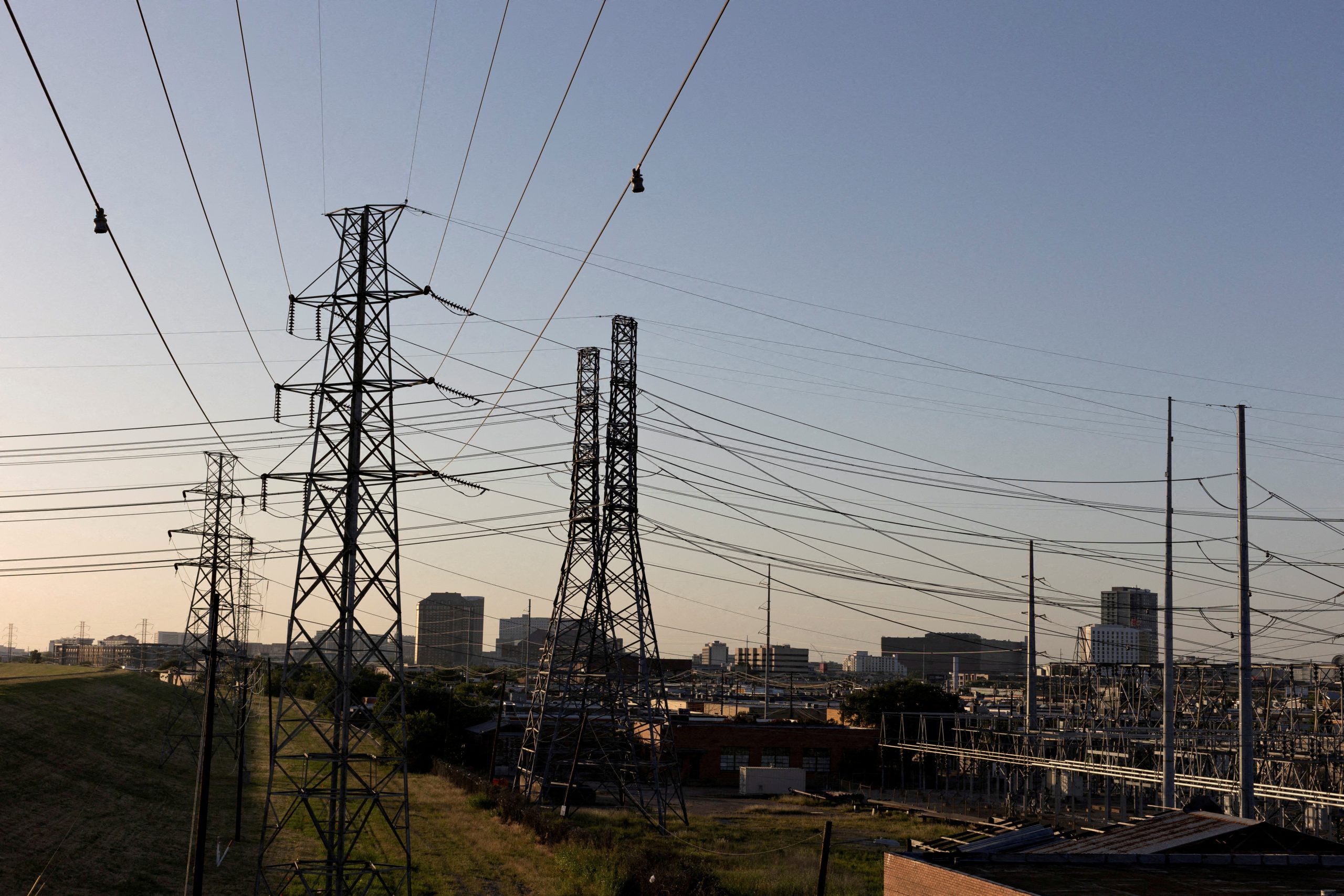
[elfsight_social_share_buttons id=”1″]
Power demand in Texas will likely hit new record highs this week as consumers crank up air conditioners to escape a lingering heat wave after homes and businesses helped avoid rotating blackouts by conserving energy on Monday.
The Electric Reliability Council of Texas (ERCOT), which operates the grid for more than 26 million customers representing about 90% of the state’s power load, warned over the weekend that it may have to take emergency measures on Monday, including rotating blackouts, to maintain reliability.
But conservation efforts reduced energy use enough to enable available resources to meet Monday’s record demand.
Extreme weather is a reminder of the February freeze in 2021 that left millions of Texans without power, water, and heat for days during a deadly storm as ERCOT scrambled to prevent a grid collapse after an unusually large amount of generation shut.
AccuWeather said temperatures in Houston, the biggest city in Texas, will rise from 99 Fahrenheit on Tuesday to 100 F on Wednesday. That compares with a normal high of 94 F for this time of year.
ERCOT forecast power use hit a preliminary 78,264 megawatts (MW) on Monday, topping the prior record of 78,204 MW on July 8, and will reach 79,226 MW on Tuesday and 79,392 MW on Wednesday.
Unlike Monday, however, ERCOT has not yet urged consumers to conserve energy on Tuesday and Wednesday.
One megawatt can power around 1,000 U.S. homes on a typical day, but only about 200 homes on a hot summer day in Texas.
Power prices at the ERCOT North Hub, which includes Dallas, slid to $130 per megawatt hour (MWh) for Tuesday from $158 for Monday. That compares with an average of $68 so far this year, $141 in 2021, and a five-year (2017-2021) average of $56.
Texas‘s power grid operator held off from imposing rolling blackouts on Monday using voluntary cutbacks and appeals to conserve energy as scorching triple-digit temperatures hit much of the state.
The Electric Reliability Council of Texas (ERCOT) warned of a potential shortage in reserves “with no market solution available.” Its website showed the operator entered the late afternoon with about 3,600 megawatts of operating reserves – which could power three-quarters of a million homes.
“We have approached all Texans and Texas businesses to conserve energy,” an ERCOT spokesperson said via email, adding the grid was not currently in emergency mode.
Large industrial power users helped avoid blackouts with power cuts, including companies that mine for Bitcoin and other cryptocurrencies. Riot Blockchain and Argo Blockchain said on social media they would curtail usage to help stabilize the state’s grid.
There are about 10 cryptocurrency mining facilities connected to the grid, ERCOT said, adding it expects demand for cryptocurrency grid connections to grow over the next four years.
The grid operator, which oversees power to more than 26 million people in the state, declined to comment on specific company power usage or facilities.
ERCOT had assured residents earlier this year that it had enough reserves to meet demand after millions of people suffered without power through a deep freeze in early 2021 for several days.
Since May, the state “has set and broken power demand records 26 times without any systemwide issues or disruptions,” said a spokesperson for Governor Greg Abbott. “Each time there is a call for conservation, Texans step up and do their part.”
High or dangerous heat levels were felt across much of the state on Monday, with temperatures in Austin hitting 103 degrees Fahrenheit and Houston touching 100 Fahrenheit at 3 p.m., according to the U.S. National Weather Service (NWS).
ERCOT asked residents to conserve electricity between 2 p.m. and 8 p.m., saying demand could reach 79,934 megawatts (MW) on Monday and 80,104 MW on Tuesday, not far from Monday’s expected 80,200 MW of available reserves.
Houston Mayor Sylvester Turner advised police and fire chiefs in the nation’s fourth most populated city “to prepare in case the state’s power grid fails during extreme heat.”
One megawatt can power about 200 homes on a hot summer day in Texas.
Texas last called for energy conservation in May, during an earlier heat wave that drove up prices to more than $4,000 a megawatt hour after six generators tripped offline.
The state’s day-ahead market has several hours on Monday afternoon listed at more than $1,000 a megawatt hour (MWh) and one at over $2,000, which is more than twice the peak price on Sunday.
